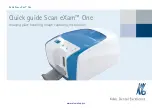
either heavily averaged to show a smooth transition in numeric depth values or
are optimized to show the shallowest depth seen in the particular beam area.
Similarly survey echo sounders make efforts to remove anomalies such as fish
swim bladder reflections from the measured data.
Do I need more pings per second ?
Assuming the pings all return good values the advantage of more pings per
second is that the survey boat can travel faster and therefore cover much larger
areas in a shorter time. The assumption that more pings provide higher quality
dense survey data is not so, density is a function of boat speed and is still
constrained by the limitations of transducer beamwidth as discussed above.
More pings can also create more noise with the high degree of insonaration in
the water and particularly in shallow water situations with multipath reflections.
What is Latency ?
Latency is the time difference between a position and depth being recorded,
the topic is extremely complex and can included some of the following sources
of error ...
• GPS position correction source time differences
• Time of flight of ultrasound in water
• Serial transmission of data to, from and through computer systems
• Physical mounting of antennas and transducers
In general the survey software attempts to minimize the error by recording a
precise timestamp on each piece of data recorded, the sum of all latency
sources can then be calculated by post-process adjustment of the data using a
''Patch Test'' algorithm. The degree of latency is dynamic so is always a function
directly related to speed of the boat when data acquired, faster the boat then
more potential latency
What effects sound velocity
The speed sound travels through water is directly proportional to the density of
the water, the parameters which change the density are ....





























